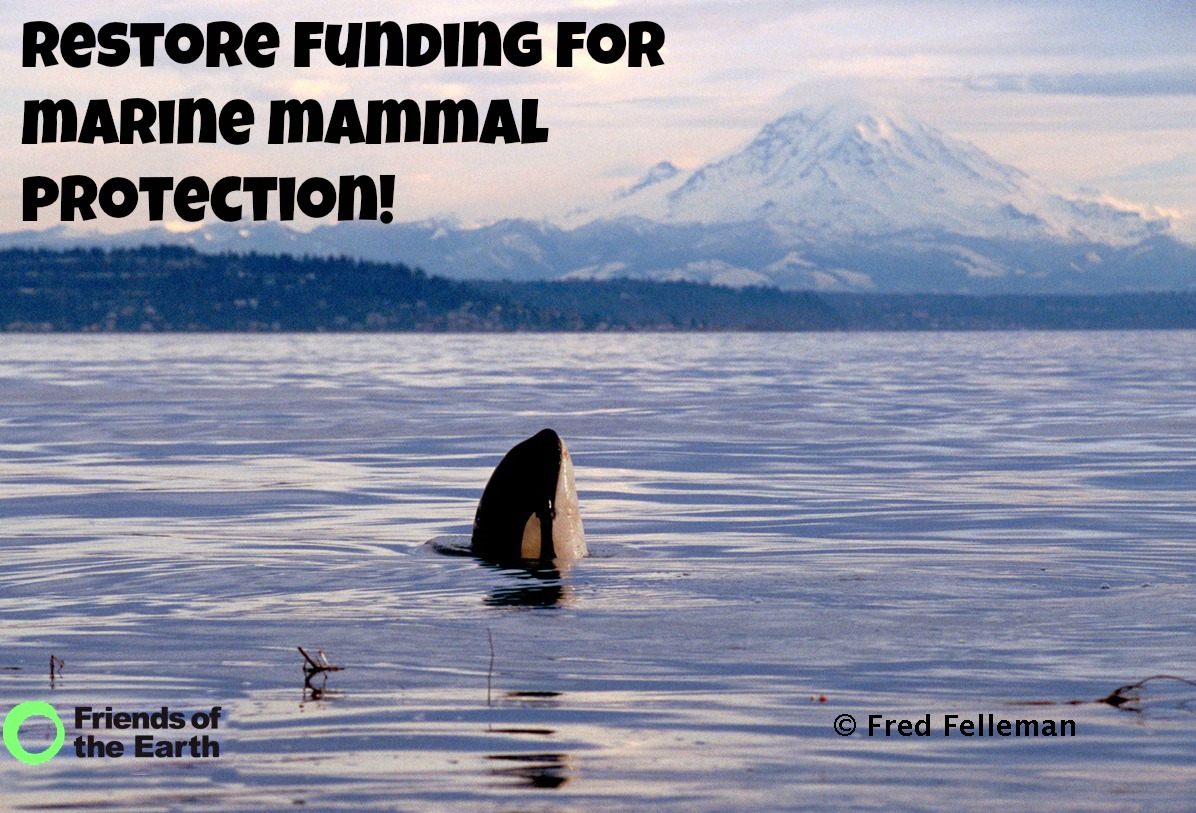- Blog
- Sustainable Economic Systems
- Update from the Pacific NW on endangered Orcas: Stranded baby whale rescued in 2002 has a calf
Update from the Pacific NW on endangered Orcas: Stranded baby whale rescued in 2002 has a calf

Donate Now!
Your contribution will benefit Friends of the Earth.
Stay Informed
Thanks for your interest in Friends of the Earth. You can find information about us and get in touch the following ways:
Eleven years ago, a rescued orphaned killer whale calf, Springer, was reunited with her family off Vancouver Island’s northern coast. Springer has been seen with her pod every year since, coinciding with the arrival of Chinook salmon returning to the region to spawn.
This week, researchers spotted Springer who is now 13, with her first calf, swimming near Bella Bella, B.C. While the calf’s exact age and gender are unknown, it appeared to be about 2.5-metres long and in good health. According to John Ford, head of the cetacean program at the Pacific Biological Station in Nanaimo, B.C., “the fact that Springer had her first calf pretty much right on schedule at 13 years shows that she’s a normal functioning member of the community again.”
Springer was first spotted in January 2002 in the waters of Puget Sound near Seattle, Washington, and her rehabilitation was photo-documented by our NW Consultant, and orca expert, Fred Felleman. Fred relates his experiences on February 2, 2002:
“It was a memorable and eventful day for me. I traveled south 25 miles along Puget Sound, from Ballard to Vashon Island, on a rare calm February day with a whale colleague (Dr. David Bain). My 16’ aluminum skiff powered by a 25hp (4 stroke) engine skimmed along the Sound at a brisk pace in the oyster light of winter. We spotted her along the Vashon Island shore where she had become accustomed to the attention from ferry crew and passengers. She had yet to be identified as a coming from the northern resident community, which had never been sighted this far south in the 30 years they have been studied. The reason her identity was a mystery was due to her skin peeling from her poor health that occluded her saddle patch used for individual photo-identification. I was determined to “get the shot” and handed the wheel to David while I made sure my two camera bodies had the appropriate film (remember that?). No sooner did I bring my camera to my face then Springer headed our way. Having shot plenty of orca ID’s in our day, David and I slowly paralleled her course and I took a color photo that enabled researchers from BC to determine her identity as A-73 (see photo below). To top that shot, just as we were departing Springer decided to “spyhop” in perfect alignment with Mount Rainier. The image above had its Andy Warhol moment as the most viewed image on the MSNBC website and was published in numerous media outlets.
The orphaned calf had been separated from her pod and because of her poor health and improbability of surviving alone, Springer was captured and rehabilitated by whale experts. While the media at the time was focused on the needs of an individual whale in distress, it was the broader potential conservation benefits this effort held, along with the local expertise on hand that made it possible. The following July, Springer was transported by a 144-foot, high speed catamaran to Dong Chong Bay, where she was held in a net pen before finally being released into the wild when members of her extended family appeared outside the bay.
The primary reason scientists and researchers were able to successfully rehabilitate Springer is because of the John H. Prescott Grant Program. Established by the Marine Mammal Protection Act under the Marine Mammal Rescue Assistance Act of 2000, the Prescott Fund provides financial assistance for recovery and treatment of stranded marine mammals, data collection from living or dead stranded marine mammals, and operation costs and facility upgrades related to the rehabilitation of marine mammals. When Springer showed up in Puget Sound, volunteers including Fred rallied and convinced NOAA to release Prescott funds to be used to rehabilitate and relocate Springer. These funds are more than matched by countless volunteer hours and Springer proved to be a good investment indeed!
Unfortunately, the Obama administration has completely eliminated federal grant support for the $4.2 million Prescott Fund from the proposed FY2014 federal budget. The decision to gut the Prescott program isn’t final, and we are encouraging everyone to take action to reinstate funding for the numerous volunteer organizations that make up the marine mammal stranding networks around the country.
As the first documented case in which a wild orca has successfully re-integrated to a wild pod, Springer is truly a success story that not only shows that such rehabilitation is clearly possible, but also why the Prescott Fund is important and worthwhile when it comes to saving these and other endangered marine mammals.
Take action to support the restoration of funding for the Prescott Grant Program here.

